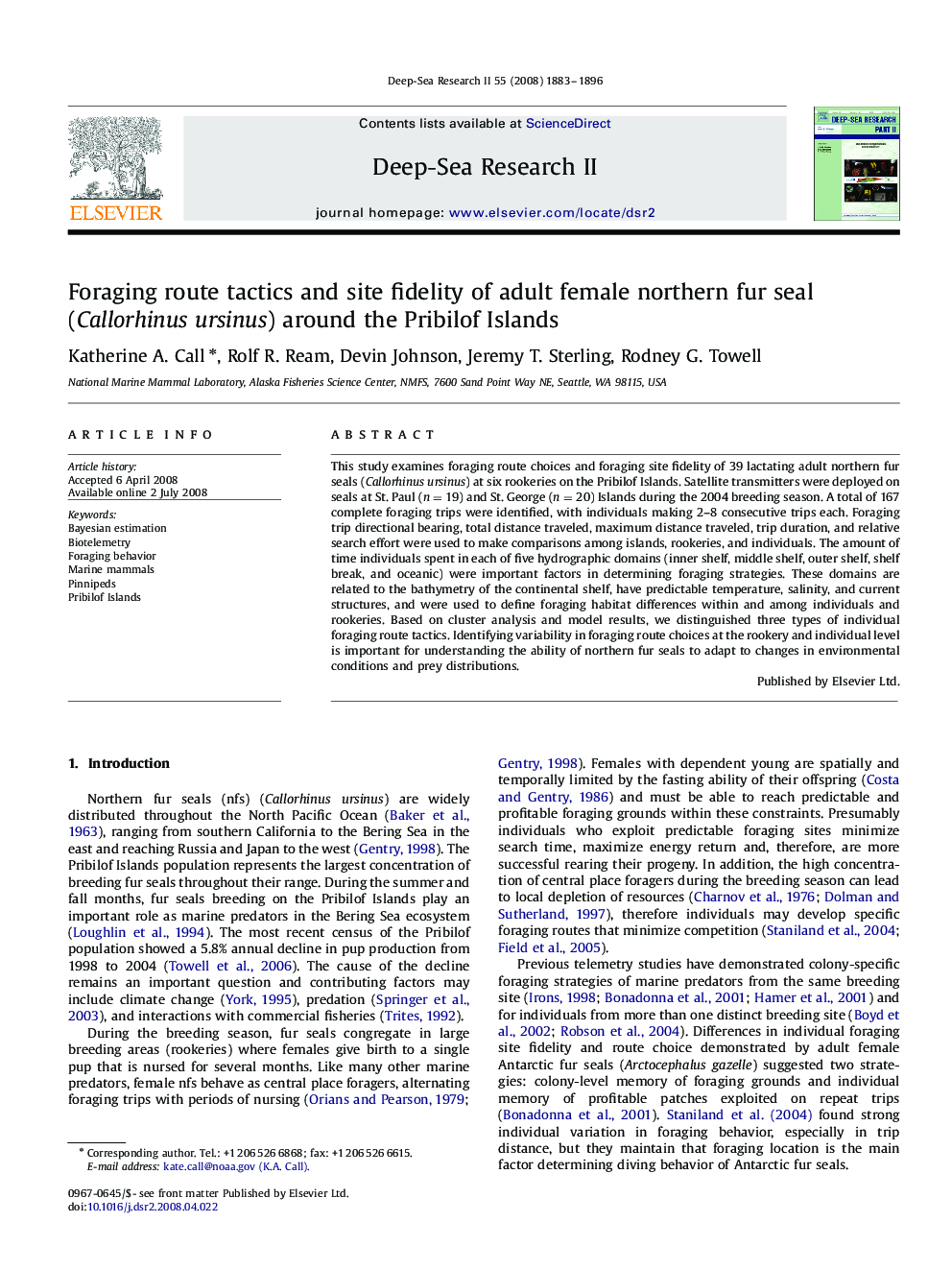| Article ID | Journal | Published Year | Pages | File Type |
|---|---|---|---|---|
| 4537401 | Deep Sea Research Part II: Topical Studies in Oceanography | 2008 | 14 Pages |
This study examines foraging route choices and foraging site fidelity of 39 lactating adult northern fur seals (Callorhinus ursinus) at six rookeries on the Pribilof Islands. Satellite transmitters were deployed on seals at St. Paul (n=19) and St. George (n=20) Islands during the 2004 breeding season. A total of 167 complete foraging trips were identified, with individuals making 2–8 consecutive trips each. Foraging trip directional bearing, total distance traveled, maximum distance traveled, trip duration, and relative search effort were used to make comparisons among islands, rookeries, and individuals. The amount of time individuals spent in each of five hydrographic domains (inner shelf, middle shelf, outer shelf, shelf break, and oceanic) were important factors in determining foraging strategies. These domains are related to the bathymetry of the continental shelf, have predictable temperature, salinity, and current structures, and were used to define foraging habitat differences within and among individuals and rookeries. Based on cluster analysis and model results, we distinguished three types of individual foraging route tactics. Identifying variability in foraging route choices at the rookery and individual level is important for understanding the ability of northern fur seals to adapt to changes in environmental conditions and prey distributions.
